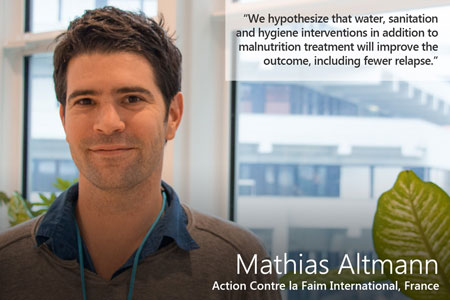A technical meeting is held in Vienna on Environmental Enteric Dysfunction
From 28 to 30 October 2015, the International Atomic Energy Agency (IAEA) held a technical meeting in Vienna on Environmental Enteric Dysfunction (EED), Microbiome and Undernutrition. Over 50 experts were brought together for this meeting by IAEA’s Nutitional and Health-Related Environmental Studies Section. Stunting is known to…
 From 28 to 30 October 2015, the International Atomic Energy Agency (IAEA) held a technical meeting in Vienna on Environmental Enteric Dysfunction (EED), Microbiome and Undernutrition. Over 50 experts were brought together for this meeting by IAEA’s Nutitional and Health-Related Environmental Studies Section.
From 28 to 30 October 2015, the International Atomic Energy Agency (IAEA) held a technical meeting in Vienna on Environmental Enteric Dysfunction (EED), Microbiome and Undernutrition. Over 50 experts were brought together for this meeting by IAEA’s Nutitional and Health-Related Environmental Studies Section.
Stunting is known to emanate from long-term unfavourable conditions of nutrition and health but now poor sanitary conditions are also considered to be an important part of the problem. It is thought that living in poor sanitary conditions may lead to gut function disorder and chronic inflammation, referred to as EED. EED is an inflammatory disorder of the gut primarily resulting from recurring infection in the small intestine through oral ingestion of faecal particles, causing incomplete absorption and ineffective use of nutrients. It also weakens the immune system, and can undermine the effectiveness of oral vaccines.
“Isotopic techniques promise to introduce a ground breaking and simplified technique to the arena of nutrition… Current techniques to measure gut leakage in children are cumbersome and expensive and therefore often not carried out. Finding an accessible, reliable and simple way of diagnosing EED in children is the biggest challenge.” – Jennifer Orgle, Program Director of Nutrition at the Center at CARE.
Over the three days, participants were able to:
- Discuss current knowledge and gaps on the causes and consequences of EED
- Share experiences related to the implementation and evaluation of programmes to prevent and treat EED in infants, children, and adults
- Discuss technical issues and strategies related to the management of EED and undernutrition, including tests for diagnosis
- Identify knowledge gaps in the field of EED where the IAEA can add value by supporting the use of stable isotope techniques
Read more about the event with the concept note in English or at IAEA.org
Read about thoughts from the participants: IAEA.org